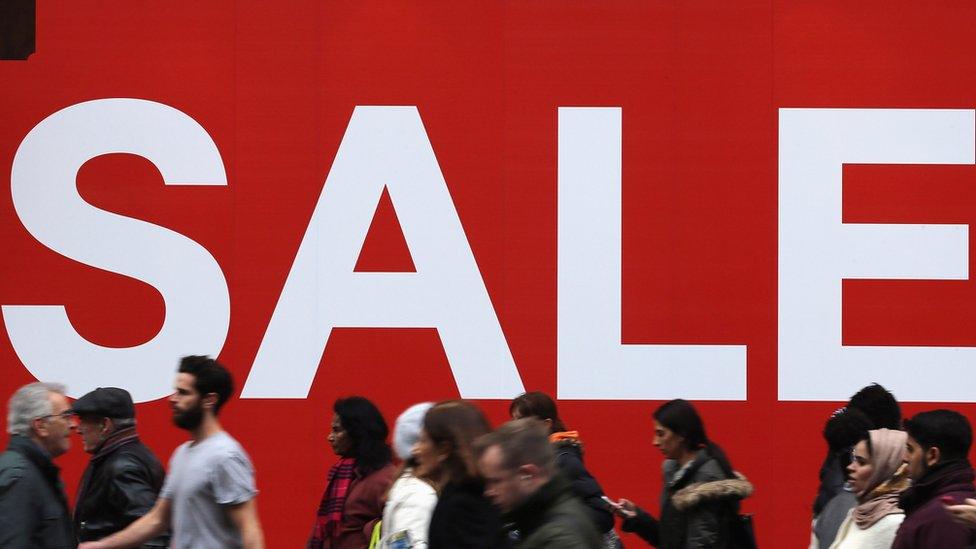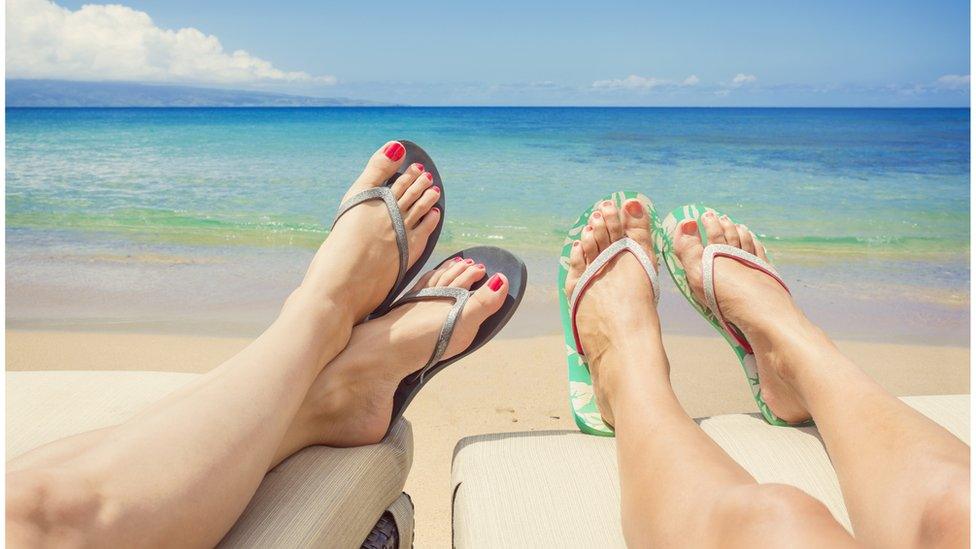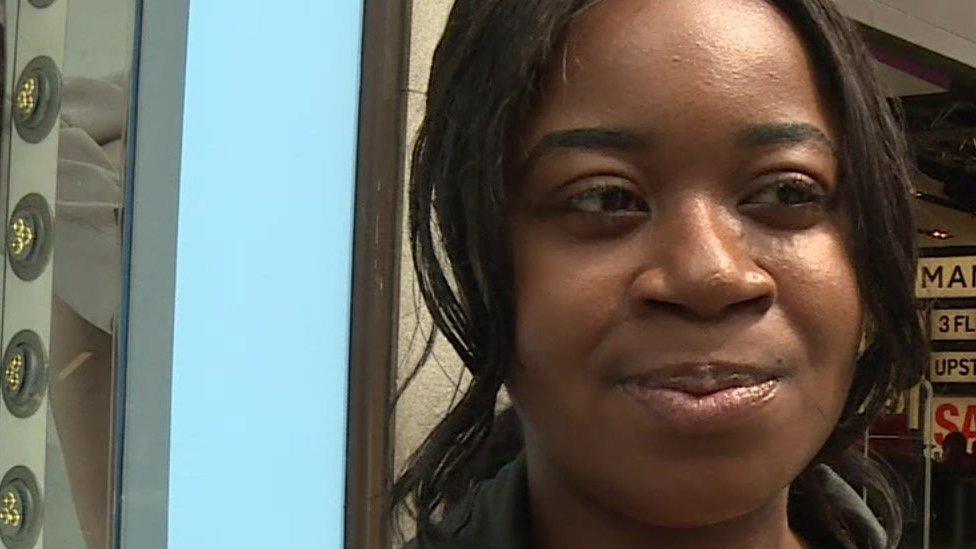Retailers 'left behind' as consumers change habits
- Published

When I was a child I vividly remember being marched into town at the end of the summer holidays for new shoes and a coat before autumn arrived. That was just the way it was.
But now, it seems British shoppers are doing things differently.
We are waiting for the sales and buying things out of season, holding on to them until they are needed. And this has led to a fall in sales.
The overall value of retail sales dropped by 2% in 2016 compared to 2015, according to consumer insight company Kantar Worldpanel, external.
With shoppers being more flexible on when they buy items, shops have leftover stock, which then has to be discounted to shift it.
Glen Tooke, consumer insight director at Kantar, says many retailers have been "left behind" as buying patterns have changed.
"These companies are stuck in a rigid, seasonal buying cycle which no longer reflects how consumers shop," says Mr Tooke.
The data covered clothing, footwear and accessories sold by both High Street retailers and supermarkets.

The drop in sales was across all types of clothing, including children's, according to Kantar Worldpanel
"This is the deepest decline the market has seen since August 2009, knocking nearly £750m off its total value in the 52 weeks ending 18 December 2016," Kantar said in a statement.
Mr Tooke said the decline was a "serious cause for concern".
'Twin evils'
Retail analyst Richard Hyman agrees that shoppers are shifting focus away from seasons when buying.
"There are twin evils at play here. The discounting going on and retailers not knowing their customers well enough to know what they want.
"In 90% of the trading weeks in 2016, more than half the retailers in the fashion market had some sort of sale going on."
This, Mr Hyman says, results in customers learning that if they hang on, the item they have their eye on might well end up being reduced in price.
Dr Dimitrios Tsivrikos, a consumer and business psychologist at UCL, says the constant discounting can lead to a "dilution of trust" meaning shoppers come to believe goods are overpriced to begin with.
Modular buys
Dr Tsivrikos believes there could also be something else at play - shoppers have adopted an entirely new way of thinking about their wardrobes.
"Retailers are failing to fully understand that consumers are now making modular purchases rather than single-item purchases," he says.
For example, rather than buying a thick winter coat, a shopper might instead invest in a lighter spring jacket, and a sports layer such as a hoodie, which can then be worn together or separately across the seasons.

Consumers are increasingly looking to buy items they can layer up
"This trend is supported by key design labels, which are leaving behind the conventional fashion week presentations and shows. Such events are driven by seasons, so instead these key design labels present fewer and more versatile collections of garments that consumers can wear throughout the year," says Dr Tsivrikos.
Winter sun
There is also another train of thought, particularly for the footwear industry.
"Online purchases have already reached 25% of overall sales of footwear in the UK - this is the fastest-growing sector," says John Saunders, chief executive of the British Footwear Association.
"The growth of online is doing away with season as collections change on a much more regular basis and products are available all year round to reflect consumer demand.
"A good example of this is the growth of sandals and open footwear for consumers taking winter sun holidays," he adds.

Winter sun holidays means we are buying sandals and flip-flops all year round
There were some bright spots for the retail market in Kantar Worldpanel's data - online-only retailers saw impressive growth of 7% in 2016 compared to 2015, while independent retailers improved sales by 3%. So what are they doing differently?
"It sounds obvious, but the fashion retailers that are doing well right now are the ones that are managing to keep all the balls in the air at once - having the right product, at the right price, in the right place, at the right time," says Graham Soult, owner of retail consultancy CannyInsights.
"It's where chains like Uniqlo and Zara benefit from controlling their own supply chains, and being really agile in getting new stock into store quickly when it's needed.
"At the same time, some of the online fashion retailers, such as Boden, are great at mixing selected seasonal pieces with timeless items that can be layered or accessorised, and sold and worn throughout the year," he adds.
Stalling sterling
But there's a new threat around the corner, one that will affect all retailers, big, small and online: the continuing fluctuation and downward trend in the value of the pound.
We hear forecasts of prices going up as retailers are forced to pass on the rising costs of items imported from abroad, but in a world where most of us own more items of clothing than are strictly necessary, will we continue to buy if prices rise?
Mr Hyman thinks not.
"It's easy to make do. Our wardrobes are generally made up of 10% items we need, 90% items we want. Retail has to inspire desire, or we won't buy. Higher prices won't do that," he says.
So if retailers are paying more, but cannot pass on these increases, the future for the British High Street could be as uncertain as a shopper's whim.
- Published7 October 2016

- Published27 June 2016
